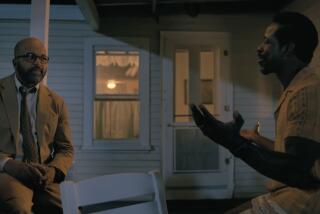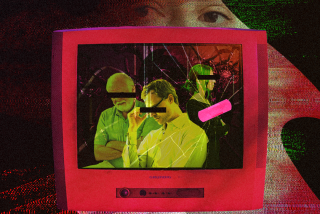The Picture of Racism
- Share via
I agree with and applaud the serious analyses by Reginald Hudlin and Eddie Murphy in their separate Counterpunch articles (“On ‘Boomerang’ and Issues of Black and White,” July 20).
African-Americans have an annual gross national product of about $350 billion. We spend our monies on everyday goods and services, just like white people do. We buy automobiles, food, clothing and shelter. We purchase baby products and cemetery plots. We get married, we have jobs and careers, and we invest in the future. We have hopes and dreams, too, just like white people do.
We spend money on the products seen on television commercials, in the newspapers and on billboards. We also spend a great deal of money going to the movies. The medium and its advertisers have painfully discovered that black people can make or break a product. Black images have become an important commodity.
This brings me to the significant point about subtle and overt media racism. The racist photograph that appeared on the Calendar front July 17 is from the NBC television series “I’ll Fly Away,” which is up for an Emmy. The photo depicts the character of a black female domestic worker carrying a young, white male on her back!
Pictures speak a thousand words. This photo totally describes at a glance “racism in the media.”
Upon examining this photograph, why is the black female toting a white boy on her back? Where are her own children and family? The smile on the boy’s face indicates that when he’s a fully grown man, he’ll fondly remember not only his dominance over blacks but that in his everyday life it will be “business as usual.”
When a white family and their impressionable youngsters view the same racist photograph, the message will further give credence to the historical reference that the “plantation syndrome” is a malignant reality.
Reinforcement of negative stereotypes and racism in the media extends to those writers, editors, producers, etc. who insist upon showing a TV daily diet of black gangbangers on the evening news, rather than identifying African-American college graduates: scholars, physicians, judges, architects, developers, engineers, designers, inventors, businessmen and professional women. The 6 p.m. news would have you believe that all black people are crooks and criminals.
Finally, racism and poverty are profitable. The media promotes that economic fact. American culture has built institutions around this premise.
Now, electronic journalism, the printed press and the motion picture industry (which includes critics, financiers and advertisers) have discovered that the African-American movie and television consumer is an economic necessity.
The stories of successful black artists have obviously awakened an echo in a great many people. The real story, however, is that the entertainment industry and media enterprises should be grateful for the billions of dollars being returned to the Wall Street investment bankers.
JOAN ATKINS, Los Angeles
More to Read
The complete guide to home viewing
Get Screen Gab for everything about the TV shows and streaming movies everyone’s talking about.
You may occasionally receive promotional content from the Los Angeles Times.






